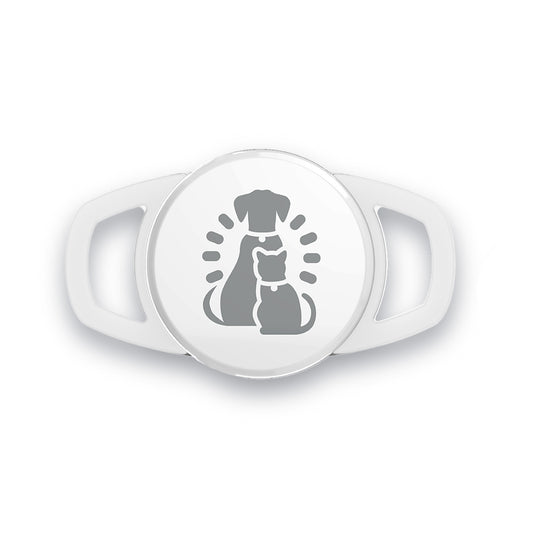Struggling with pet hair everywhere? Discover how the right kind of vacuum can make pet care and cleaning easier and more efficient.
Pet ownership comes with plenty of rewards, but it also means dealing with constant shedding and dander. Finding the right vacuum to handle pet hair and allergens can make a huge difference in maintaining a clean and comfortable home. In this blog, we’ll explore what makes pet vacuums different from regular ones and how investing in one, like the GroomingPro RX, can improve your cleaning routine.

What is a Pet Vacuum?
Pet vacuums are specifically engineered to handle the unique challenges of pet hair, dander, and debris. These vacuums often feature stronger suction power and specialized attachments, such as motorized brushes or tangle-free rollers, to effectively lift hair from various surfaces. They are also designed to trap allergens, ensuring that the air in your home stays clean while cleaning up after your furry friends.
Regular vacuums are designed for general cleaning across various surfaces, from carpets and rugs to hardwood floors. With powerful suction and attachments like brushes and crevice tools, they handle everyday dirt, dust, and debris. While versatile and ideal for standard cleaning tasks, regular vacuums aren't specifically built to tackle pet hair or the unique messes that come with having pets.
Key Differences
Filter Quality:
A key distinction between regular vacuums and pet-specific vacuums often lies in the type and quality of filters they use. The presence of a good filter can make a significant difference in managing allergens like pet dander and dust. Filters work by capturing these particles and keeping them securely inside the vacuum, ensuring they don’t get released back into the air once the cleaning is finished. Many pet vacuums are equipped with HEPA (High-Efficiency Particulate Air) filters, which are far more effective than standard filters at trapping tiny allergens. HEPA filters can capture particles as small as 0.3 microns, making them particularly beneficial for people with allergies or sensitivities. In contrast, most regular vacuums do not come with filters, or they may only include basic filters that are less efficient at preventing allergens from being recirculated into the air.
Suction Strength:
Cleaning up pet hair presents a unique challenge compared to dust and dirt. While dust and dirt are made up of small particles that can be easily swept or vacuumed up, pet hair consists of longer, more stubborn strands that can easily tangle, making them harder to remove. Unlike smaller debris, pet hair often clings to fabrics, carpets, and upholstery, requiring more powerful suction to effectively lift it. A regular vacuum may not provide the necessary strength, which is why vacuums designed for pet hair typically feature enhanced suction power and specialized tools to tackle these more resilient strands.
Noise Level:
A key difference between pet vacuums and regular vacuums is the noise level. Pet vacuums are designed to operate more quietly, with quieter motors and noise-reducing features that minimize disruption. This is especially beneficial for pets who may be sensitive to loud sounds. In contrast, regular vacuums are typically louder, as they aren’t built with noise reduction in mind. The quieter operation of pet vacuums can offer a significantly more comfortable cleaning experience for pets and their owners.
Tools and Attachments:
The attachments of a regular vacuum and a dog grooming kit serve different purposes. Regular vacuums typically come with basic tools like floor brushes, crevice tools, and upholstery brushes for general cleaning. While useful, they may not be effective enough for handling pet hair and dander. On the other hand, pet grooming vacuums often include specialized dog grooming tools like brushes and combs designed to remove loose fur directly from your pet’s coat, as well as nozzles that work gently but effectively on furniture and bedding.
Shape & Efficiency:
The shape of a vacuum can greatly influence its cleaning efficiency. Unlike regular vacuums which come in various forms, pet vacuums are typically designed with an upright structure for optimal performance. This design allows for stronger suction, making it more effective at lifting pet hair from carpets and floors. Additionally, pet vacuums usually feature dustbins with a larger capacity to accommodate the significant amount of pet hair without frequent emptying.
What to Look For in a Pet Vacuum
When choosing a pet vacuum, look for one with powerful suction to easily lift stubborn pet hair from carpets, furniture, and floors. A vacuum with specialized attachments like a pet brush or upholstery tool will help you clean every corner of your home, including hard-to-reach spots. Additionally, ensure the vacuum has a high-efficiency filter to trap allergens and improve air quality, especially if you have pets with sensitive skin or allergies.
Weight and ease of use are also important. A lightweight design makes it easier to maneuver and carry around the house, while a tangle-free brush system will save you time on maintenance. These features combined will help keep your home clean and fresh without the hassle. If you’re interested in a pet vacuum with dog clippers, choosing a high-quality pair will allow you to manage your pet’s fur and minimize shedding.

What We Recommend
If you’re looking for a way to simplify both grooming and cleanup, we recommend our GroomingPro RX Grooming Kit and Vacuum. This all-in-one system features seven specialized tools and a vacuum function that captures excess hair as you groom. With HEPA filtration, a complete anti-allergen seal, and a whisper-quiet 55dB operation, it helps maintain a clean environment while keeping your pet comfortable. Plus, with six guide comb sizes for customizable grooming, it's perfect for pets of all kinds.


